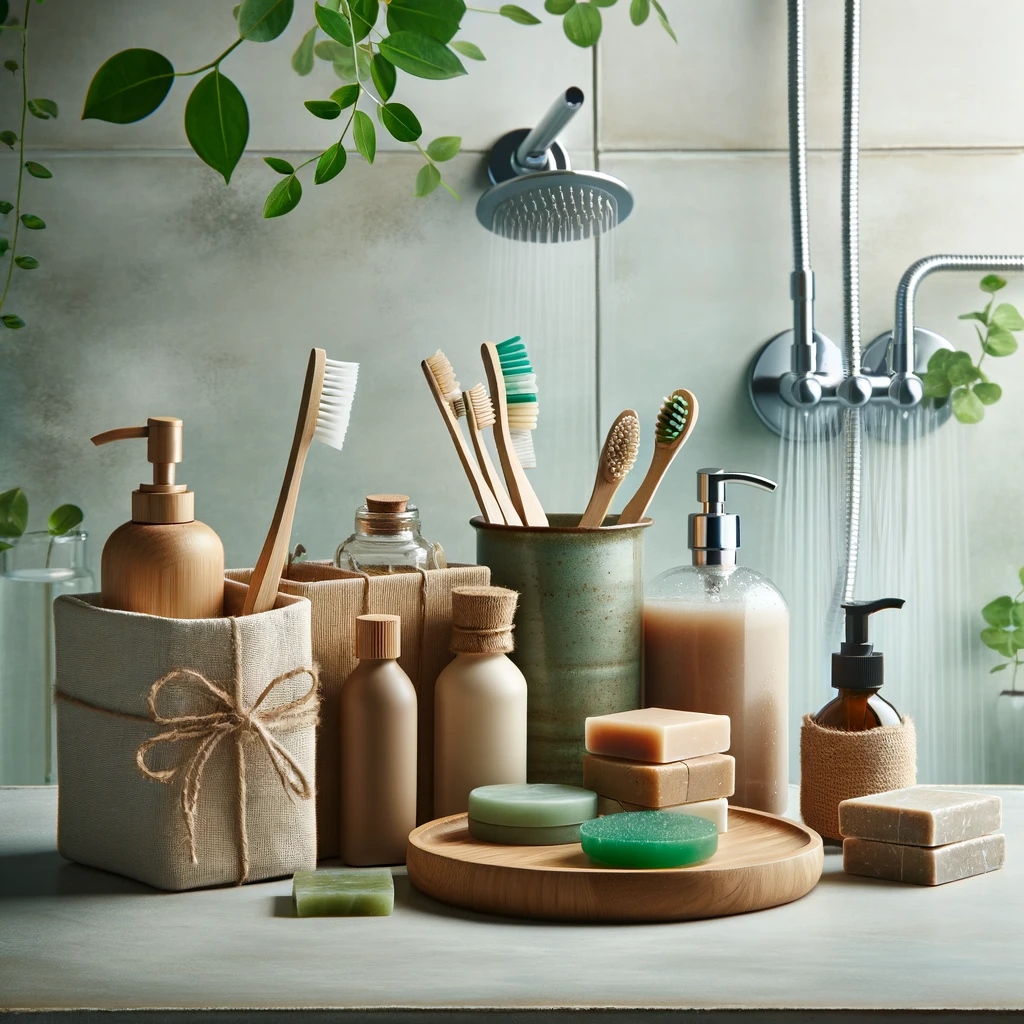Sustainability in Hygiene refers to the adoption of eco-friendly practices in our daily personal care routines. This concept goes beyond just using green products; it encompasses a holistic approach towards minimizing the environmental impact of our hygiene habits. By integrating sustainable practices, we not only preserve natural resources but also contribute to a healthier planet.
Eco-Friendly Materials in Hygiene Products: Choices and Benefits
In the realm of Sustainability in Hygiene, choosing eco-friendly materials is crucial. Products made from organic, biodegradable, or recycled materials significantly reduce environmental harm. For instance, bamboo toothbrushes and cotton menstrual pads are not only sustainable but also offer benefits like biodegradability and skin-friendliness. These choices support a circular economy, reducing waste and resource consumption.
The Impact of Hygiene Practices on the Environment
Our daily hygiene routines, if not managed sustainably, can have a significant environmental impact. For example, the excessive use of water in showers or the disposal of non-biodegradable hygiene products like plastic toothbrushes contributes to resource depletion and pollution. Sustainability in Hygiene advocates for practices that minimize this impact, such as shorter showers, using water-saving devices, and selecting products with minimal packaging.
Water Conservation in Daily Hygiene Routines
Water is a critical resource in our hygiene practices. To promote Sustainability in Hygiene, it’s essential to adopt water-conserving methods. Simple steps like turning off the tap while brushing teeth or installing low-flow showerheads can make a considerable difference. These practices not only conserve water but also reduce energy consumption and lower utility bills, showcasing how sustainable practices can be beneficial in multiple ways.
Biodegradable vs. Non-Biodegradable Hygiene Products: Understanding the Difference
In the context of Sustainability in Hygiene, understanding the distinction between biodegradable and non-biodegradable products is crucial. Biodegradable items, like plant-based soaps or natural sponges, decompose naturally and don’t persist in the environment, thereby reducing pollution and landfill waste. On the other hand, non-biodegradable products, often made from plastics or synthetic materials, can linger in ecosystems for years, causing harm to wildlife and contributing to environmental degradation. By opting for biodegradable hygiene products, individuals can significantly reduce their ecological footprint.
DIY Eco-Friendly Hygiene Solutions: Recipes and Techniques
A key aspect of Sustainability in Hygiene is the ability to create your own eco-friendly hygiene products. DIY solutions not only reduce reliance on commercially produced items but also allow for complete control over the ingredients used. For example, homemade toothpaste can be made using baking soda, coconut oil, and peppermint oil, offering a natural and effective alternative to commercial toothpastes. Similarly, natural body scrubs can be created from coffee grounds or sugar mixed with essential oils. These DIY techniques empower individuals to contribute to a sustainable future while enjoying personalized hygiene products.
Sustainable Packaging Solutions in Hygiene Industry
The packaging of hygiene products plays a significant role in Sustainability in Hygiene. Sustainable packaging solutions include using recyclable materials, reducing packaging size, and employing biodegradable options like paper or bamboo. The hygiene industry is increasingly embracing these practices, recognizing the environmental benefits and the growing consumer demand for sustainable options. By choosing products with sustainable packaging, consumers can help reduce waste and promote a circular economy.
Economic Aspects of Sustainable Hygiene Practices
Sustainable hygiene practices are not only beneficial for the environment but also have economic implications. Initially, eco-friendly products might seem more expensive than conventional options. However, in the long run, they can be more cost-effective due to their durability and efficiency. For instance, a bamboo toothbrush may last longer than a plastic one. Moreover, adopting water-saving practices in hygiene routines can significantly lower water bills. The economic benefits of Sustainability in Hygiene also extend to broader societal levels, where reduced environmental damage can lead to lower healthcare and environmental remediation costs.
Final Thoughts:
Embracing Sustainability in Hygiene is not just a trend; it’s a necessary step towards preserving our planet and ensuring a healthier environment for future generations. Through the adoption of eco-friendly materials, understanding the impact of our daily hygiene practices, conserving water, and considering the economic implications, we can make a significant difference. This journey towards sustainable hygiene practices is not only about making environmentally conscious choices but also about rethinking and transforming our habits for the greater good. By integrating these sustainable practices into our daily lives, we contribute to a more sustainable world, one small step at a time. Let us commit to these changes, knowing that each effort, no matter how small, is a stride towards a cleaner, greener, and more sustainable future.
FAQs:
- What is Sustainability in Hygiene?
- Sustainability in Hygiene refers to the adoption of eco-friendly and resource-conserving practices in our daily personal care routines to reduce environmental impact.
- Why is it important to use biodegradable hygiene products?
- Biodegradable hygiene products are important because they break down naturally in the environment, reducing pollution and landfill waste compared to non-biodegradable alternatives.
- Can DIY hygiene products be as effective as commercial ones?
- Yes, DIY hygiene products can be equally effective. They allow for customization according to individual needs and preferences, and often avoid harsh chemicals found in some commercial products.
- How does sustainable packaging in hygiene products help the environment?
- Sustainable packaging, often made from recyclable or biodegradable materials, helps reduce waste, pollution, and the consumption of non-renewable resources.
- Are eco-friendly hygiene products more expensive?
- While some eco-friendly products may have a higher upfront cost, they often prove to be more cost-effective in the long run due to their durability and efficiency.
- What are some easy ways to conserve water in daily hygiene routines?
- Simple practices like turning off the tap while brushing teeth, taking shorter showers, and using water-saving fixtures can significantly conserve water.
- How do individual hygiene choices impact the environment?
- Individual hygiene choices, such as the products and practices we use, can have a significant impact on the environment through water usage, chemical runoff, and waste generation.
- What role do consumers play in promoting Sustainability in Hygiene?
- Consumers play a crucial role by choosing sustainable products, advocating for eco-friendly practices, and influencing industry trends towards more sustainable options.
- Can sustainable hygiene practices also benefit personal health?
- Yes, many sustainable hygiene practices and products are free from harsh chemicals and are often gentler on the skin, potentially improving personal health.
- What future trends are emerging in Sustainability in Hygiene?
- Future trends include the development of innovative eco-friendly materials, increased use of biodegradable packaging, and greater emphasis on water conservation technologies.



